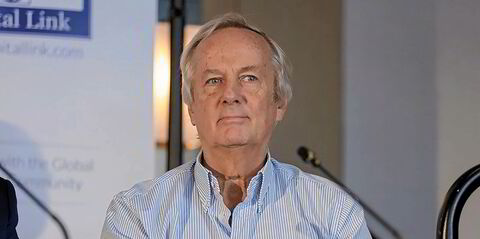The Sanchi, which collided with a bulker and caught fire off China last week, claiming the lives of the crew, was part of an increasingly dynamic tanker trade between the Middle East and Asia that is set to grow in the next few years.
The 2008-built, 164,000-dwt crude tanker was actually carrying a “clean” cargo of Iranian condensate to South Korea.
The growth in Middle Eastern refinery capacity and product export growth is set to drive the eastern hemisphere-bound tanker trade over the coming years.
London broker Braemar ACM’s research team has mapped out the growth of Middle Eastern refinery capacity and exports, and its prospects for the future.
It points to the completion of Saudi Aramco’s 400,000 barrel per day (bpd) Jizan refinery this year as marking the start of a second wave of regional refinery expansion.
Jizan will be followed by 10 new more refineries in the region by 2020, the largest of which is the Kuwait National Petroleum Co’s 615,000-bpd Al-Zour, scheduled to be completed next year.
The first phase of Middle Eastern expansion, between 2014 and 2017, increased net crude distillation and condensate splitter capacity by 1.6 million bpd, plus 1.1 million bpd in upgraded capacity. This growth was aimed mainly at producing distillates and trading to Europe and Africa. The second phase, Braemar ACM suggests, “should focus on Asian markets”.
The first-phase expansion has lifted exports from 1.9 million bpd to 2.5 million bpd and had a considerable effect on tanker demand.
“The resultant growth in demand for clean tankers has been salutary, lifting tanker dwt required for [the] Middle East’s product exports by nearly 70% since 2013,” Braemar ACM says.
It estimates the increase in clean product exports from the Middle East has created additional demand for 55 MR and handysize tankers, 22 LR1 tankers and 18 LR2s.
Although south-eastern Africa and Europe have been the destination of much of the Middle East's export growth, that focus is set to turn on Asia, with a similar effect on tanker demand.
The next three years will see refinery capacity expand by 1.8 million bpd and exports by 1.5 million bpd, the brokerage estimates, matching the growth in the previous four years.
The Middle East to Asia product trade has centred around naphtha on LR2 tankers, but Braemar ACM expects the emphasis to turn to distillates between 2018 and 2020.
“Demand growth for refined products is expected to outstrip refinery capacity growth in Asia by close to one million bpd during this period. By 2020, we project a gasoline shortfall of 0.6 million bpd and a middle-distillates deficit of 0.2 million bpd,” it estimates.
There is also increased demand for marine distillates ahead of the 2020 global limit on the sulphur content of fuel.An increase in exports of distillates to Asia should benefit MR and LR1 tankers, Braemar ACM predicts. About 155 MR tankers and 31 LR1s are on order.



